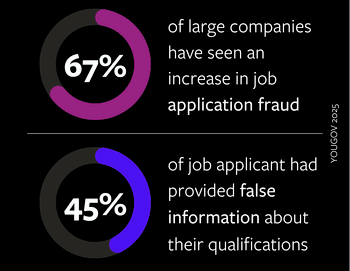Are Agile Certifications Still Relevant?
AI is reshaping how organisations learn, adapt and deliver value. Consequently, certification has never been more human.
As Ellie Bowett at APMG puts it, “In a world where artificial intelligence can almost fake your capability, certification proves authenticity and knowledge.”
From Badges to Benchmarks
Agile certifications are evolving from badges to benchmarks of real expertise. They give organisations and individuals a shared foundation to build upon.
It’s the difference between “doing agile” and “being agile”.
Certification ensures that agility becomes part of how people think and work, not just a process they follow. It supports dual growth: individuals gain confidence and credibility, while organisations gain capability and culture.
Beyond Badge Fatigue
There is no denying that there is badge fatigue, but true certification goes beyond symbols.
It shouldn’t be about how many badges or certificates we can collect but rather the roles we’re doing and the organisations we work with. Certification is not the end of learning but the validation of it; this is particularly important in an age when anybody can claim expertise online. As Ellie explains, “Certification proves authenticity and knowledge...it shows that you’ve actually understood what you’ve learned.”
Trust, Risk and the ROI of Real Capability

For organisations, certification reduces risk, builds trust, and creates reliable benchmarks for capability. 45% of large UK companies have found false information about qualifications in job applications, and 67% say job application fraud is increasing (YouGov, 2025).
In a world of CVs written by AI and fabricated experience, certification becomes a filter for the truth. It allows employers to verify skills and build teams with confidence. And the ROI is real! Organisations with strong learning cultures report 17% higher profitability (Deloitte, 2019), not because of the certifications themselves but because of the culture they build.
Agile Organisations are Learning Organisations
Meaningful change happens when learning leads to reflection and improvement, not just compliance. Certifications build learning organisations and create environments where development is constant; curiosity is encouraged and change feels safe.
When training is purposeful, not performative, certification becomes a driver of continuous improvement.
Investing in People
Investment in certification is not a cost; it is a safeguard. Training staff is cheaper than replacing them, and it drives engagement and retention.
Henry Ford said it best, “The only thing worse than training your employees and having them leave is not training them and having them stay.”
In the long term, certified capability leads to stronger leadership, higher trust, and measurable business outcomes.
Certification as a Career Amplifier
For individuals, certification is a career amplifier, both for visibility and confidence. It sets you apart from the crowd. These days, recruiters use bots to scan CVs and having the right qualification might get you through to the next round. It validates your expertise inside your organisation.
Whether you are new to agility or advancing as a leader, certification anchors your credibility. Certification does not replace experience, but certified individuals bring shared language and understanding. It is a foot in the door, particularly for these starting out or shifting careers.
From Knowledge to Application
Impactful learning sticks because it connects directly to real work. It is practical, reflective, and applied. The goal is not to pass a test but to change behaviour in the workplace.
AgilePM v3 reflects the growing focus on leadership and people. The human skills of empathy, resilience and collaboration are what AI cannot do, and that is why the Nine Principles of Agile Leadership are embedded in the training.
Accreditation now signals not just a mastery of frameworks but commitment to people-centred leadership which is exactly what agile ways of working promote.
The Human Edge in an AI World
In an AI-driven world where skills can be automated and knowledge can be mimicked, real expertise needs to shine through, it should be validated, human, and agile.
Yes, certification has a price tag...but so does inaction! Inaction can lead to hiring misfires, stalled change, avoidable rework, and disengagement. In an AI-shaped market, the premium is on verified capability and human leadership.
Certification, done right, is one of the most efficient ways to build both.
Bridging Theory and Practice
For the Agile Business Consortium and APMG, the goal is not just knowledge, but application.
For AgilePM v3, the Foundation level is about understanding and knowledge while the Practitioner level is about showing the application of that knowledge. The Practitioner level bridges theory and practice through scenario-based learning, getting as close to real life as possible. Many agile professionals do not start as “agilists”; they arrive through squiggly careers and certifications help to consolidate their learning and give them a framework for growth.
This distinction matters. This is nicely articulated in an Edmund Gettier quote, “Knowledge without application is theatre; application without shared language is chaos.”
Certification ties both together.
Head over to our Agile Awards Conference 2025 case studies to hear more from Niamh Trundle and Ellie Bowett on Real Expertise in an Artificial Age: Certify for Success!
